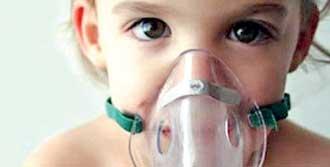08 Aug 2024 - {{hitsCtrl.values.hits}}
| The number of children who attend the OPD (Out Patient Department) with cough and cold symptoms has increased |
 The number of cases that we have detected is much less than the actual status as we don’t test every child present with coughs and colds for influenza The number of cases that we have detected is much less than the actual status as we don’t test every child present with coughs and colds for influenza |
| Consultant Pediatric Chest Physician, Dr. Anuradha Kodippili |
 Medical experts have noticed a surge in pediatric cases exhibiting wheezing symptoms following a seasonal flu leading to an influenza-like illness. “The number of children presenting with influence-like symptoms is rising. Influenza is a virus that spreads in two types. Epidemics are present,” said Consultant Pediatric Chest Physician, Dr. Anuradha Kodippili.
Medical experts have noticed a surge in pediatric cases exhibiting wheezing symptoms following a seasonal flu leading to an influenza-like illness. “The number of children presenting with influence-like symptoms is rising. Influenza is a virus that spreads in two types. Epidemics are present,” said Consultant Pediatric Chest Physician, Dr. Anuradha Kodippili.
Moreover, she explained that coughs and colds play a main role and that the current influenza is a respiratory virus that’s spreading. Furthermore, she explained that in addition to the typical symptoms like fever, runny /congested nose, cough, and body aches seen in influenza, some children, especially known wheezers present with exacerbation of wheezing.
Rise in wheezing cases among children
“There is an increase in wheezing among children. Children are affected by wheezing during this infection. It has been noticed that wheezing is a symptom of the current influenza spread,” said Dr. Kodippili. “The number of cases that we have detected is much less than the actual status as we don’t test every child present with coughs and colds for influenza,” underscored Dr. Kodippili. However, it was said that there is no requirement to test all the children and only those who are very unwell and get admitted to the hospital or children who fall into high-risk categories are taken through a checkup.
Dr. Kodippili stated that the influenza virus is spread through the respiratory droplets. When a person with influenza coughs and sneezes the virus spreads through respiratory droplets, therefore it is an air-borne virus. “The number of children who attend the OPD (Out Patient Department) with cough and cold symptoms has increased,” said Dr. Kodippili. Moreover, she mentioned that one can get infected by touching a surface contaminated with the respiratory secretions of an infected person and then touching the nose or mouth.
 “It is important to get your child examined by a doctor when they are having flu symptoms. Then the doctors would decide on testing for influenza. Most of the children with flu recover without complications; just like during a viral cold,” said Dr. Kodippili. They only need supportive care with paracetamol, fluids and symptomatic treatment. Selected on their conditions, children will be treated with antiviral treatment which is available both at the government and private sectors.
“It is important to get your child examined by a doctor when they are having flu symptoms. Then the doctors would decide on testing for influenza. Most of the children with flu recover without complications; just like during a viral cold,” said Dr. Kodippili. They only need supportive care with paracetamol, fluids and symptomatic treatment. Selected on their conditions, children will be treated with antiviral treatment which is available both at the government and private sectors.
She mentioned that hand hygiene and wearing a mask would prevent the infection from spreading the virus. Parents must keep their children, especially preschoolers, at home when they are unwell and have flu symptoms.
Moreover, Dr. Kodippili advised parents to not smoke in the presence of kids as wheezing cases rise. She cited that a notable increase can be seen in cases of wheezing among pediatric patients.
What happens in wheezing? Why do some children wheeze with influenza?
She explained the changes that take place in the respiratory tract when one gets affected by wheezing. This condition is a common symptom with many chest complications in children; including asthma. It isn’t a problem of the lungs of children. “There is a tubing system in the respiratory tract. The tubing system flows from the nose to the lungs. They are connected to a tube called a windpipe. It divides into two and reaches the two lungs. It branches into several other tiny branches. At the end of each tube, there’s a balloon-like structure (Alveolar). Those  branches are sensitive and will be narrowed if the child is infected by wheezing,” explained Dr. Kodippili. When these small airways get narrowed, the child finds it difficult to exhale. “This can happen with influenza or any viral/bacterial infection. Wheezing following influenza or viral chest infections can last a few weeks to months,” explained Dr. Kodippili
branches are sensitive and will be narrowed if the child is infected by wheezing,” explained Dr. Kodippili. When these small airways get narrowed, the child finds it difficult to exhale. “This can happen with influenza or any viral/bacterial infection. Wheezing following influenza or viral chest infections can last a few weeks to months,” explained Dr. Kodippili
Originating of the musical sound in the lungs was explained by the doctor where balloons are inflated and when squeezed by the neck, the airflow is narrowed; as a result, a musical sound is produced.
She added that wheezing is more common among children than adults, as these tiny tubes are narrower in comparison to adults. Adult tubes are rigid, but children are more flexible. Therefore, children are easily infected by wheezing.
Dr.Kodippili explained that for children who have Asthma, sometimes the fur allergies from pets at home are a positive factor in wheezing. Therefore, one should avoid contact with those.
“Animal fur, pollen, firewood smoke, mosquito coil smoke industrial dust and passive smoking should be avoided,” said Dr. Kodippili
Do you have these symptoms?
As viral influenza has increased wheezing among children, Dr. Kodippili explained the specific symptoms that one would face during wheezing.
Dry cough, a musical Sound heard when breathing, difficulty in breathing/ shortness of breath, and chest tightness among the older children.
Recurrent wheezing in children develop into Asthma. A child associated with asthma can possess the symptoms of wheezing. Asthma is a fatal disease and if it isn’t properly treated, the child could face death.
Symptoms of Asthma
According to Dr.Kodippili, for a child to get a predisposition to Asthma to have a family history of Asthma in an immediate family member. Or other diseases associated with the Asthma family, such as Eczeema, as there is a high chance for predisposition to Asthma.
She stated that if the child has food and drug allergies it could be called as a symptom of Asthma.
Also, wheezing can occur at a particular time of the day. It will increase with exposure to different environments such as smoking, dust, or pollen.
Dr. Kodippili declared that there is no particular test to diagnose Asthma. It takes around 5 years to be diagnosed as an Asthma patient. Just because a child has the symptoms for a while does not make the child labeled as an Asthma patient.
Prevention
To the question raised on the prevention techniques, she advised to avoid what triggers Wheezing. The use of inhalers if diagnosed in the doctor’s prescribed way would help the patient to overcome wheezing sooner. “It is difficult to prevent wheezing associated with viral infections/ influenza as cross infections are very common among children,” said Dr. Kodippili.
She stated that children less than 5 years old who are diagnosed with Asthma are called preschool wheezers. These children have respiratory/chest infections or viral-induced wheezing
Some will develop Asthma after the period and some will completely recover.
Children living in polluted areas are more exposed to wheezing; especially children from upcountry and the countryside.
Treatments for wheezing
“Treatments for wheezing are available in almost all the government and private hospitals.
Since the management of wheezing doesn’t need expensive medications (nebulizes), it is readily available,” underscored Dr. Kodippili.
Furthermore, diving into the depth of the treatments, she explained about two types of treatments done to manage wheezing.
Acute management of wheezing focuses on providing immediate relief from symptoms controlling symptoms and improving the quality of life.
Long-term Management of wheezing is aimed at controlling chronic conditions, preventing symptoms, and improving the quality of life. The specific approach depends on the underlying cause, such as asthma, allergies, or other respiratory conditions. When patient with Asthma is diagnosed he/she will be instructed to use inhalers.
“Certain patients don’t adhere to the necessary treatments provided by the doctors, hence they need ICU care and necessary ventilations,” she mentioned.
Challenges
There are certain challenges faced by doctors and patients such as a lack of knowledge of patients about Inhaler techniques. They are also not specifically trained. It is hard to eliminate environmental pollution to avoid wheezing.
During preschool wheezing, it is hard to treat the patient (children) as they don’t understand the purpose of treatment. (Less than 2/3 years) Viral infections are common as children live without isolation once they are infected with the viral infection spreading with wheezing.
She added that there aren’t many campaigns to make the public aware of childhood wheezing and Asthma.
As we face an increasing number of children affected by respiratory issues, can we afford to ignore the critical need for awareness and prevention measures?
24 Dec 2024 1 hours ago
24 Dec 2024 2 hours ago
24 Dec 2024 3 hours ago
24 Dec 2024 4 hours ago
24 Dec 2024 4 hours ago